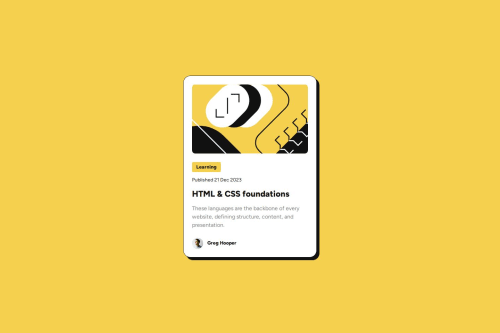Blog Preview Card

Solution retrospective
Everything went pretty well. I would appreciate feedback on general code structure and accessibility. Also I tried to make the font-size responsive without media-queries using clamp(). However the title scales down sooner than the rest of the elements. Is there another way to achieve this? I tried container queries and cqw units but that didn't work. Would be much appreciated if someone could point me in the right direction!
What challenges did you encounter, and how did you overcome them?Making the font-size responsive without the use of media queries.
What specific areas of your project would you like help with?General code structure, semantics, accessibility and making the font-size responsive without the use of media queries.
Please log in to post a comment
Log in with GitHubCommunity feedback
No feedback yet. Be the first to give feedback on Dylan de Bruijn's solution.
Join our Discord community
Join thousands of Frontend Mentor community members taking the challenges, sharing resources, helping each other, and chatting about all things front-end!
Join our Discord